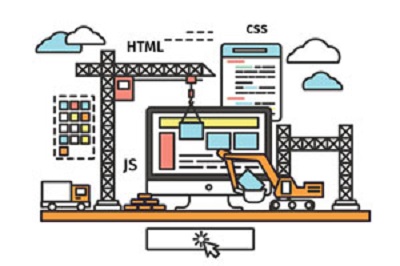“I’m not large enough for an enterprise platform” is something we often hear customers say. That may be true: perhaps your organization is still developing an eCommerce strategy, or you know for certain that you “just need a buy button” for your products that are marketed elsewhere.
But, what happens when you start to succeed? Your needs change as you grow, and your eCommerce solution should provide the flexibility to adapt to your business.
As a developer at Brilliance who works closely with eCommerce solutions of all types, I frequently talk to customers who are limited in their choices because of their platform. In order to add new features or explore new channels or markets, these customers are forced to pursue costly workarounds or contract with outside vendors.
Before you choose an eCommerce platform, consider the architecture of the software and the potential for technical debt.
A Framework For The Future: Good Architecture vs. Technical Debt
 As a solution grows in complexity (more features are added) good architecture becomes increasingly important because it helps keep the cost of new features low.
As a solution grows in complexity (more features are added) good architecture becomes increasingly important because it helps keep the cost of new features low.
Without good architecture, a project incurs technical debt, which means future development is more difficult (and costly) because developers have more decisions to make when they work with poorly designed solutions. Even though technical debt means job security for developers like me, we hate it because of the additional difficulty of finding good solutions to problems.
People argue about what exactly constitutes good architecture, but its absence can be obvious: cost overruns, project delays, and obnoxious comments from developers are key signals that the project’s design is too complex or doesn’t adequately cover all the problems that need to be solved.
One principle of design that simplifies things is to have a single point of truth for each concept. That is, if you want to be sure of something, then there is only one place you need to check. To use a data example: the email address for a customer should be stored in only one place. The email may get displayed in different parts of the site, but when the customer changes their email, there is only one place it has to be saved.
The same is true not just for data, but also for concepts in code. For example, a customer’s true discount should only be calculated in one place. We may multiply an item’s regular price by a percentage in order to show the user how much they save, but there’s only one piece of code that calculates the final price when the user adds the item to their cart. This describes a “factored” solution where each part does something simple, but the parts working together can do something complex. (For any math geeks - think back to middle school algebra. It’s like factoring an expression with variables to break it into its simpler parts: x2 + x can be factored into x(x + 1).)
Now, using a framework doesn’t automatically give you good design (only a competent software/systems architect can do that). Rather, a framework allows you the freedom to use what you need for your business without forcing you into bad design choices for expediency’s sake. If there is a part of the framework that just doesn’t make sense for your project, you’re free to ignore it.
On the other hand, a prepackaged solution doesn’t necessarily lead to poor design. But, when problems arise that a prepackaged solution doesn’t address, it’s often difficult to solve one problem without creating another now or in the future. The temptation to incur technical debt is greater because finding a good design solution often means working with a core component of the platform.
The Episerver Framework
The framework solution that we prefer to work with at Brilliance is Episerver. We like it because it’s a well-thought-out and mature framework for creating and displaying web content. Its eCommerce components are adaptable to almost any business case, which are particularly important to our B2B clients.
Episerver was initially built as a CMS and has tons of really helpful features for content creators, editors, and marketers. Episerver’s developers have done a great job of creating useful abstractions around content (products, categories, blog posts, landing pages) and technical details (database access, cache management, cloud hosting) that allows us to focus on solving business problems.
These terms may or may not mean much to you, but being able to solve the problems you have with eCommerce does! Episerver incorporates proven technologies but still allows us the flexibility to add new ones.
Getting Started Fast
Buying an Episerver license gets you the framework, and then you have to build your site on top of that. At Brilliance, we understand that some clients will want a clean slate to work with, but others will be better off starting with a basic design. That’s why we created Catalyst for Episerver Commerce.
Catalyst is a starter kit for Episerver that includes a set of templates and features robust enough for a B2B site with complex client needs, but also easily configurable for simpler B2C style sites. We’ve added features for account management, complex pricing, and customer self-service. What we haven’t done is locked our clients into a particular payment or fulfillment system.
It’s like getting some of the benefits of a prepackaged solution while keeping the architecture and flexibility of the framework. Plus, it saves a lot of time and money in the development process.
If you want to build a site with the flexibility to grow with your business and still get it up and running quickly, Catalyst is the way to go.
Schedule a free consultation to find out how a solution built on the Episerver framework can meet and adapt to the needs of your business and your clients now and for years in the future.



